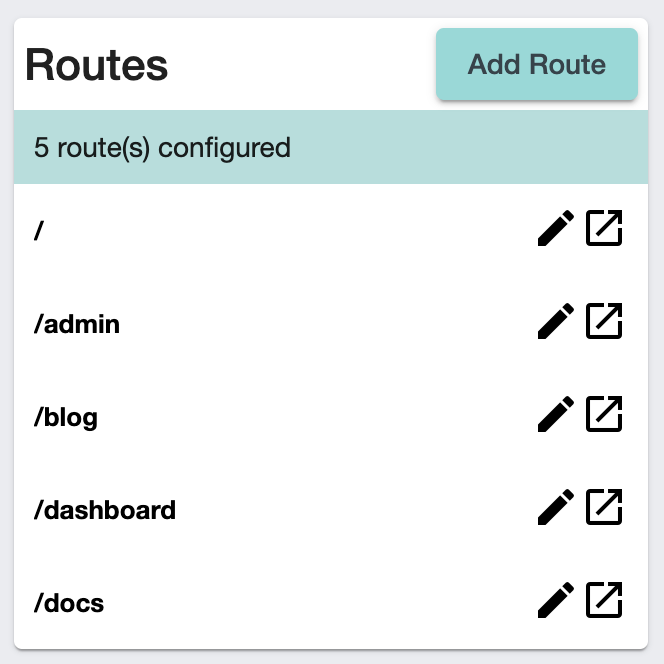Unlocking the true power of composable low-code application development for the enterprise
February 6, 2023 by Kilian Carroll, Product Marketing @ Fathym

In today's fast-paced digital world, companies are looking for ways to increase efficiency and accelerate application delivery while overcoming developer shortages to meet their growth and revenue goals. One way to do this is through no/low-code tools, which allow even non-technical employees to create software without writing code. This has led to a rise of "citizen developers" who can use these tools to build applications but lack the problem-solving skills of a true engineer. For example, a marketing professional might use a no/low-code tool to create a simple landing page for a campaign, while a business analyst might use one to create workflow automations for repetitive processes.
According to Gartner, the worldwide market for low-code development is expected to reach nearly $27 billion in 2023. This is almost a 20% increase from 2022's $20.5 billion in spending.
While low code has the potential to unlock access for a greater number of the workforce outside IT to create tech solutions and contribute to application delivery, these tools can prove problematic, adding to an enterprise's technical debt and "shadow IT." According to Jason Wong, distinguished VP analyst at Gartner, "IT has been grappling with the governance of SaaS applications and cloud and managing the data and integrating into on premise data centers or with legacy applications. So, it's not a new challenge, but it’s just a different perspective now because low code allows the distributed development of capabilities like never before."
With the explosion of new no/low-code tools, how can enterprises adopt low code while ensuring proper governance and security, following best practices and protecting IP? Whether startup or large enterprise, organizations cannot afford to forget about proper governance or disregard the future proofing of their tech stacks.
While no/low-code tools are hugely useful for creating marketing and e-commerce websites, or for automating integrated CRM and email workflows, there is still understandable scepticism surrounding the extent to which low code can effectively work alongside or even replace traditional "high code" software development practices. Can an enterprise truly future proof their tech stack and development plans if they are tied to low-code vendors? Do they really have full ownership of their IP? How secure are the connections between core systems and third-party applications? Is real code generated that can be exported? Is self-hosting facilitated? Do low-code vendors have capabilities that match the scale of an organization's long-term development plans and cloud needs?
Unlocking low-code composability
At Fathym, we believe the key for successful adoption of low code is through the lens of "high code" best practice. Fathym facilitates this through what we call LowCodeUnits (LCUs) – deployable and reusable software components and the most basic building blocks of the Fathym world. These flexible units can hold anything ranging from automated containers to APIs to frontends. LCUs are not just configurations like other "low code" offerings. They’re real code – in components.
LowCodeUnits are composable and can be consumed by existing solutions or weaved together to create new, cohesive solutions. In this way, organisations can efficiently craft custom, open source, and SaaS/third-party solutions.
What are some examples? LCUs can be anything across the full stack, spanning frontend and backend. An LCU can be a packaged Infrastructure as Code (IaC) template, an automated container deployment, an API reverse proxy, a third-party API integration, a UI component, micro frontend or React starter template. An LCU can be a package of frontends and proxies, deployable as a set of routes on the same domain. Or it could be a deployable instance of a web-based tool, self-hosted with a few CLI commands on Azure.
Fathym provides a pathway for engineers to craft custom LowCodeUnits that can be used across their organisation or shared with customers and partners. In this way, LCUs are a bridge between “high code” development and the emerging worlds of low code and even no code in a way that doesn’t compromise good development practice.
Engineers can package cloud-based configurations and development into LCUs that can be deployed, composed and consumed by more junior developers or even non-engineering resources. Through LCUs, enterprises can define and standardise development, while giving a larger number of their workforce the ability to problem solve and meaningfully contribute to the enterprise's IP. As Wong of Gartner puts it, "These (low-code) technologies can be used to compose and recompose modular components and PBCs (packaged business capabilities), to create adaptive custom applications for changing business needs."
Instead of citizen developers you have citizen engineers who can contribute to the enterprise’s problem solving and IP development by combining and weaving together LCUs, despite not being trained in software development. LCUs facilitate the creation of fusion teams of software engineers and citizen engineers, empowering companies to tap into the knowledge and skills of their existing workforce and allowing them to contribute to the company's core IP. It’s notable that Gartner predicts that by 2026, "developers outside formal IT departments will account for at least 80% of the user base for low-code development tools."
Low-code tool consolidation
As I touched on earlier, enterprises looking to adopt various no/low-code tools into their tech stack face difficulties in consolidating these tools and applying proper governance. These tools can span an ever-growing number of SaaS subscriptions and vendor clouds, and it's increasingly difficult for IT to maintain full visibility over all integrations.
With Fathym, organizations can consolidate their various no/low-code tools with Fathym as a central control plane and primary hosting environment, on top of their own Azure cloud. Any no/low-code platform that generates real code that can be published to GitHub repositories or npm packages can be deployed and hosted through Fathym’s end-to-end DevOps workflow. Whether using frameworks to hand code or a no-code tool like Plasmic that generates code in Next.js or Gatsby, Fathym manages the entire DevOps workflow. Applications can be composed from separate and independently deployed repositories but hosted together on the same domain, whether built by "high code" or no/low code, further merging these worlds.

Ultimately, while Fathym offers a streamlined deployment and hosting platform, it is not another cloud. Users can get started in a shared SaaS cloud, but for organisations, applications hosted on Fathym are deployed to their Azure cloud. In this way there is absolutely no vendor lock-in or compromised IP ownership. Fathym is like a virtual developer, setting up mature development and DevOps workflows that deploy into a customer's own repositories and Azure infrastructure.
Whether through the rapid and democratized composition of software solutions through LowCodeUnits, or the consolidation of no/low-code tools through Fathym's hosting environment on Azure, organisations can accelerate and streamline their low-code journey without vendor lock-in or compromising IP ownership.